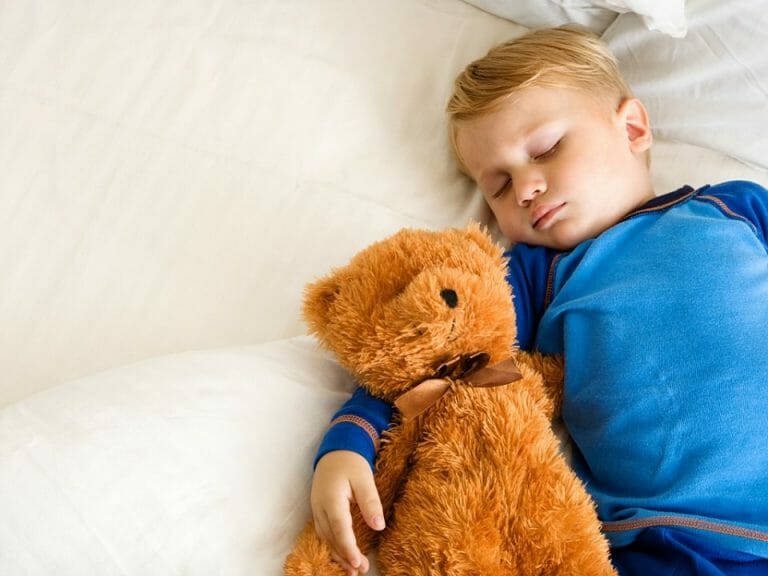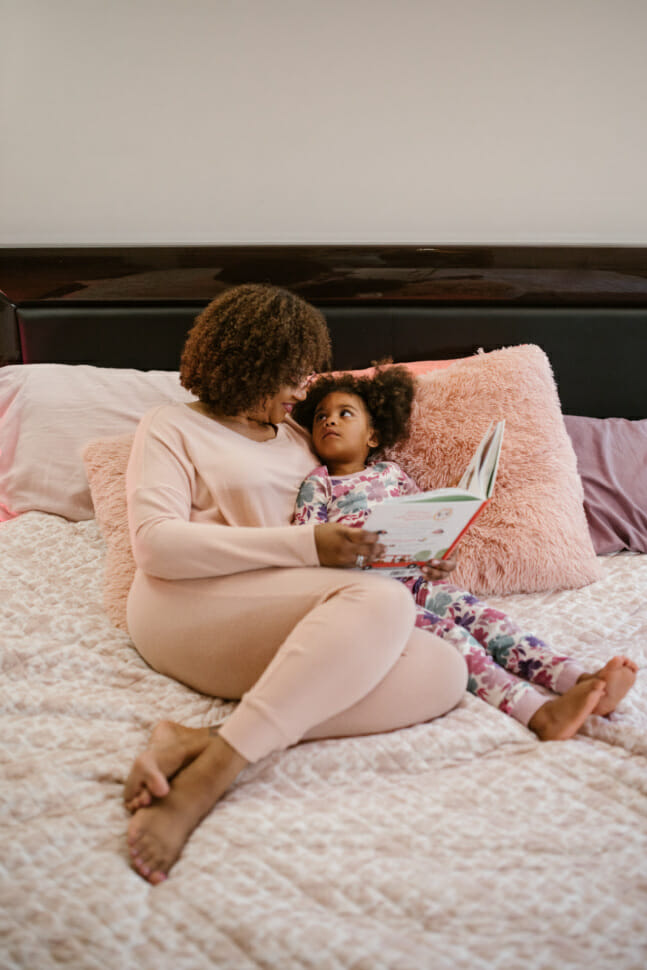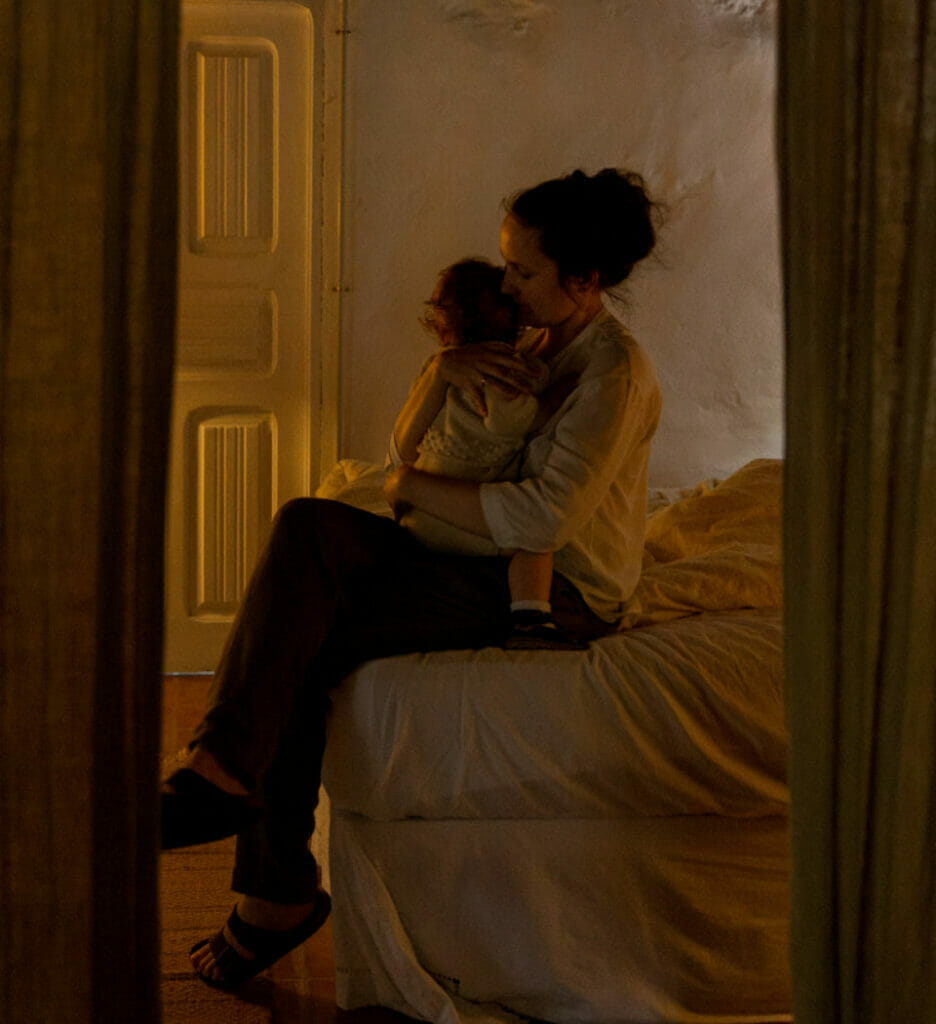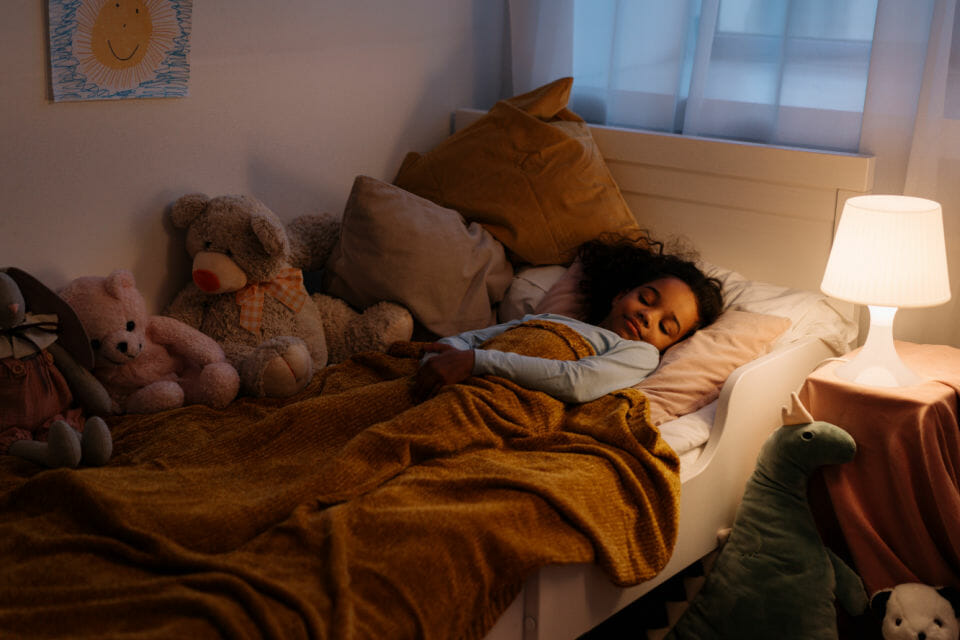![]()
Secrets to getting your toddler to sleep through the night

While newborns can be notoriously tricky to get down, we’re often totally unprepared for just how tough toddlers can make bedtime. Baby sleep is one thing we’re used to hearing complaints about but not often do you hear the issues that come with toddler sleep routines or tantrums.
But there may be a reason why some kids seem to drop off easier than others.
Here are some secrets to solving some of the most common toddler sleep problems.

Tips for helping get your toddler to sleep
Sleep plays a vital role in your little one’s ability to develop well, concentrate, physical health, mental health and attention span. The effects of poor sleep can impact the entire family unit’s physical and mental well-being.
If you can’t seek the advice of a sleep consultant or sleep coach and do sleep training, there are some simple tips to help your child get better sleep.
1. Follow a sleep routine

It seems a bedtime routine is vital. Having a consistent bedtime each night, turning the lights low, having a bath, brushing teeth, reading a book and going to bed is a good thing to try and stick to each night.
It gives your child a sense of what is coming. Soon, they will be familiar with the sleep routine and know what to expect next. This might help in less resistance when it comes to going down.
2. Eating the right diet

Ensure your toddler is well fed and that their diet is healthy and doesn’t contain stimulants like sugar or chocolate, which could give them an energy boost, especially before bed.
A good diet and a full dinner will also help avoid things like hunger tantrums and poor sleep.
If you suspect food allergies or intolerance, seek professional help from a dietician and try eliminating suspect foods. It would help if you focused on what your child needs in their physical and mental health to ensure they get the best sleep.
3. Having the right naptime routine

If you struggle to get your child to sleep at night, they may be having a longer naptime than they need during the day. Alternatively, if your child isn’t napping, they might crash earlier in the evening and then wake up at night.
Ensuring your toddler has healthy sleep habits during the day will help them get a good night’s sleep. Don’t be in a rush to drop a nap or naps. Transitioning from two naps to one or one to none can often take time.
Refusal of a nap here and there doesn’t usually mean it isn’t necessary. There will be days they won’t take them and days they desperately need them, so take it on a day-to-day basis during times of transition.
4. They’re sleeping in the right environments

Often, kids wake up at night because they are cold or warm. If they’re sleeping safely in a dark room that may or may not contain a night light, ensuring the room isn’t too hot or too cold definitely helps.
Another thing you can do to their sleep environment to help them have more restful sleep is to invest in a white noise machine to help prevent outside noises from distracting them.
Being in their own room may be one way to help you get restful sleep, but if they need more cuddle time or you choose co-sleeping, that’s ok also. You need to ensure the room is comfortable for all involved, and if you do transition them to their own room or own bed, you do it in a way to prevent sleep regression.
5. Comfort your child if they have night terrors

Night terrors are very common for many children. Their brains are so active, which can also cause them to have dreams that they wake up in the night feeling scared.
If your little one is frightened, go to them and reassure them. Try singing or playing lullabies or having a white noise machine if they need the distraction. Having the TV on before bed could help stimulate their imagination.
Try to turn off the television and create a calm, quiet time before bed. Give them some cuddle time in their own bed before you slip out and let your toddler sleep.
Experts tips from our sleep expert
Clinical Psychologist Lynn Jenkins is one of our amazing Healthy Mummy wellness experts. In a recent podcast, she discusses how to get into the calm zone and sleep better.
You can hear more about this topic in her podcast on the Healthy Mummy Wellness App.
As a clinical psychologist, Lynn shares what comes into her clinic room and the most common reasons for pediatric sleep issues.

There’s much more to sleep than what she can offer from a psychological point of view, such as our nutrition and hormones.
“We can all relate to worries as adults as when we’re going off to sleep, we have free time for our thoughts to come in, and it’s then we tend to analyse everything. From a biology point of view, what our system is actually doing during this is assessing threat,” she says.
“If we were to go over how we spoke with someone that day and think to ourselves why that person didn’t smile at us or seemed cold, our system is almost checking to see if we’ve been rejected and how to prepare for that again.”

Lynn says kids go through a version of this too.
“Temperament, personality and genetics come into play when there’s a tendency to overthink at night. It’s like they are processing events in their day, and their system is working out how threatened they were, and what can they do to prepare for it happening again.”
Fear of the dark
The other common issue associated with sleep is the dark. Often children will see shapes of something scary or menacing in the dark, which will impact whether you can get your toddler to sleep. The reality is usually an innocuous object such as a bookshelf or hat stand, and that is what our brain does.
“Our brain makes sense of things, and because we are wired so negatively, it goes to the negative every single time. And it’s important to understand that kids cognitive abilities grow, their imagination gets more robust so they can imagine more things,” Lynn describes.

Lynn’s favourite child sleep technique or practice for children and adults is Yoga Nidra. This is a meditation that works quite quickly, and it turns your attention to your body parts, one at a time.
Also called yogic sleep, it’s a state of consciousness between waking and sleeping, like the “going-to-sleep” stage. Yoga Nidra works with the autonomic nervous system and can be easily worked into any sleep schedule or routine.

“The autonomic nervous system regulates processes of the body that take place without a conscious effort such as heartbeat, breathing, digestion and blood flow,” she says.
“This system also includes the sympathetic and parasympathetic nervous systems. And meditation helps us calm the sympathetic nervous system, mainly our fight-or-flight response.”
“It’s so appealing as it takes hardly any time to indulge in our imagination or our worries or thoughts, and if we keep it going long enough, we’re tired, and we fall asleep.”
For more of Lynn’s tips on children and sleep, check them out here.
Listen to the full podcast in the Healthy Mummy Wellness App
Get Access to the Healthy Mummy Wellness App

The Healthy Mummy Wellness app is built to support mums’ mental, physical and social well-being. We have expert advice to help mums makeover their minds, transform their mood, manage their hormones, sleep better and engage with their family. You can listen to podcasts, read blogs, work out with our trainers and find healthy, family-friendly recipes from the palm of your hand.



